Order: Passeriformes
Family: Paridae
Genus: Poecile
Species: Poecile rufescens
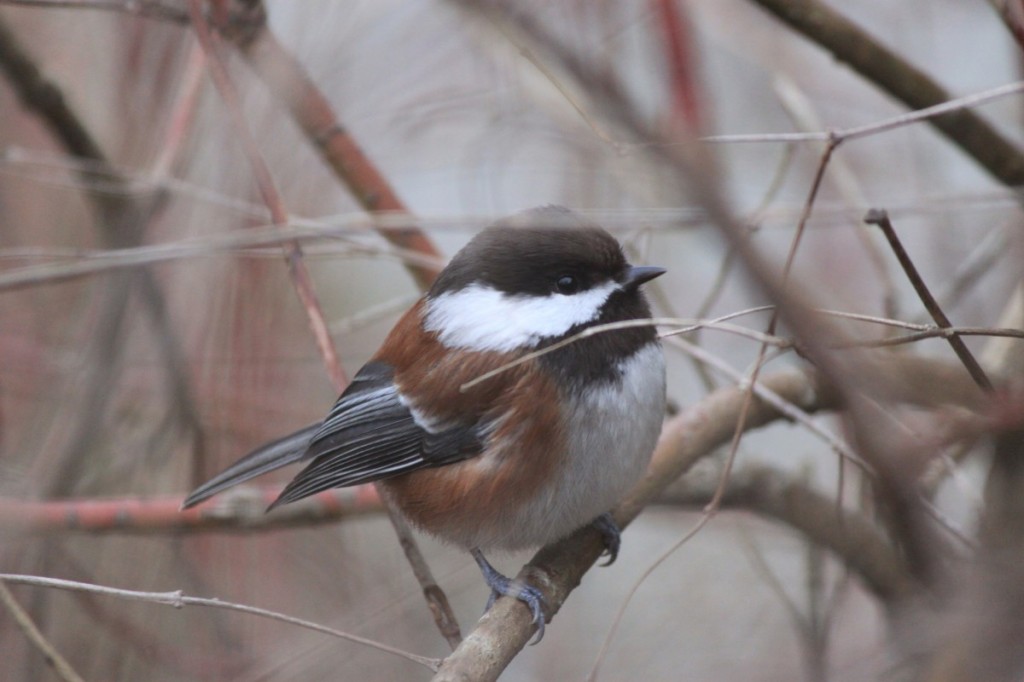
By Melisa Pinnow
The Chestnut-backed Chickadee is widely regarded as a beautiful and iconic Pacific Northwest species. A resident of dense forested areas, its eponymous chestnut back and flanks distinguish this chickadee from its black-capped relative (Poecile atricapilla) The cheeks of the Chestnut-backed Chickadeehave a similar bold white band with the characteristic dark crown and throat of all chickadees. In Washington, the Chestnut-backed Chickadee sports a distinct dark back and flanks, in contrast to its lighter relatives in California.
Common predators of the Chestnut-backed Chickadee include Douglas’ squirrels, weasels, raccoons and domestic cats. Nest theft by House sparrows, House wrens and Bewick’s wrens has also been observed (Gaddis and Corkran 2008).
Chestnut-backed Chickadees are found year-round along the west coast of North America from the Gulf of Alaska to the central coast of California; in some areas of eastern British Columbia, Washington and Oregon; and western Montana and Idaho (Sibley 2003). Individuals found in the southern range typically have paler plumage, and it has been noted that darker coloration is associated with higher relative humidity (Grinnell 1904).The Chestnut-backed Chickadee’s range overlaps with the more widespread Black-capped Chickadee, and in some areas, the mountain chickadee (Grinnell 1904).
The distribution of the Chestnut-backed Chickadee follows the pioneer model, which describes the recolonization of post-glacial habitat after the Pleistocene epoch. This theory suggests that Chestnut-backed Chickadees rapidly recolonized post-glacial regions, “through both short-distance and long-distance dispersal” (Burg et al. 2006). This recolonization created several distinct populations with differing alleles, and because of the way populations dispersed, “genetically similar populations were not the most geographically proximal populations” (Burg et al. 2006). These findings, along with mitochondrial data, suggest that the Chestnut-backed Chickadee and the closely related boreal chickadee may have diverged into two species during the Pleistocene epoch (Burg et al. 2006).
Chestnut-backed Chickadees prefer the shade and dietary resources of coniferous forests. They can be found within the forest or along the outer edges, but will frequently inhabit more developed areas, living in the shrubs and trees of parks, towns, suburbs, and cities. In Washington, this species is primarily found in mixed coniferous forests of Douglas fir, western hemlock and western red cedar (Lundquist and Mariani 1991 via Burg et al. 2006). Overall, Chestnut-backed Chickadees are more abundant during the winter and prefer mature or old growth forests stands, and it is likely partially due to more available snags for nesting (Anthony et al. 1996). Chestnut-backed Chickadees are obligate secondary-cavity nesters, meaning they are dependent on snags – dead or dying upright trees – in order to build their nests. Old-growth Douglas fir snags are their preferred nest sites (Zarnowitz and Manuwal 1985).
Though greater than 90% of Chestnut-backed Chickadee nests in study areas were infected with the parasite Protocalliphora, the parasite appears to have unsubstantial effect on chickadee nestlings, only causing problems if blood loss due to the parasite causes problems after fledging (Gold and Dahlsten 1983).

Image by Minette Layne (2008)
Insects and arthropods are the primary source of food for this chickadee, composing roughly 65% of its food intake, with the rest being seed and plant material (Bent 1946). Moth and butterfly larvae appear to be the preferred food source, along with true bugs (Hemiptera) and some wasps (Bent 1946). Nestlings are primarily fed Lepidoptera (moths and butterflies) and Hymenoptera (flies, wasps, bees and ants) larvae, as well as smaller quantities of spiders. In a study conducted at the University of Berkeley, California, it was found that Hymenoptera larvae composed 36% of fecal sac matter in Chestnut-backed Chickadee nestlings, while Orthoptera (grasshoppers and crickets) composed 33% of chickadee guts (Kleintjes and Dahlsten 1994).
Chestnut-backed Chickadees are opportunistic eaters, with a diet that changes with conditions. One study showed that in August there was a higher concentration of caterpillars and spiders in Chestnut-backed Chickadees’ stomach cavity samples (Beal 1907). In comparison, vegetable matter has been observed to compose 40% of stomach contents in winter months (Dixon 1954). Chestnut-backed Chickadees are rapid foragers who spend a lot of time hanging beneath their perches (such as twigs, cones, or leaves) (Root 1964). They will often carry items to branches, hold onto them with their feet against the perch and divide the item into smaller pieces to consume. The Chestnut-backed Chickadee is capable of foraging maneuvers such as hovering and chasing, however it is rather clumsy in this respect in comparison to other birds (Root 1964).
Compared to Black-capped Chickadees, these birds foraged higher in trees, preferred conifers to hardwoods, were found more in the tree canopy than in the subcanopy, and tended to use twigs as a perch to forage (Sturman 1968b). The areas they inhabit tend to be different as well – there were about 3.5 times as many black-capped chickadees recorded in deciduous trees than coniferous, and five times as many chestnut-backed chickadees in conifers than deciduous (Smith 1967).
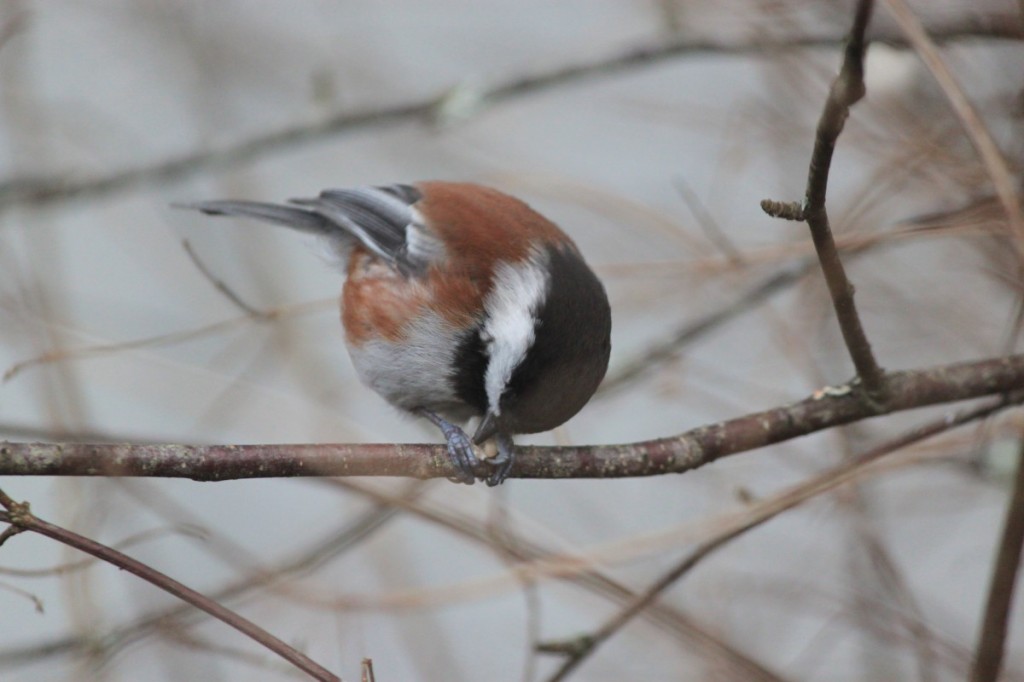
By Melisa Pinnow
Nestlings perform the typical “cluck” associated with young birds, which grows into a peep sound (Figure 1-J). The well-known “chicka-dee” call develops from the juvenile vocalization “dee” (Figure 1-K), which is a characteristic of both black-capped and mountain chickadees as well. However, the chick-a-dee call of Chestnut-backed Chickadees is different from that of other chickadees (Hoeschele et al. 2009). The Chestnut-backed Chickadee “chick-a-dee” call is used in social contexts, and is the most common vocalization heard during the dawn chorus (Dahlsten et al. 2002 via Hoeschele et al. 2009). This Chestnut-backed Chickadee vocalization consists of four distinct call note types, A, C, D, and D hybrid notes, which are similar to note types in other chickadees (Hoeschele et al. 2009). If there are A notes present in a call, they will almost always appear first in the call. C notes are usually heard in isolation from other Chestnut-backed Chickadee call types. D notes, though they don’t appear in every call, will almost always be heard at the end of a call. Finally, D hybrid notes (Dh), resemble the A and D note and therefore are considered hybrid notes. In relation to note length, Dh notes are long, and are heard between A and D notes and are never heard more than once in a call (Hoeschele et al. 2009).
Antagonistic behavior in Chestnut-backed Chickadees birds is characterized as raised crest feathers accompanied by a rapid “chick-a-dee” or “chit-chit-chit” vocalization (Dahlsten et al. 2002). While the Chestnut-backed Chickadee “chick-a-dee” call is the most acoustically similar to the Black-capped Chickadee “chick-a-dee” call, when played various acoustically similar calls (including the chestnut-backed and less closely related species), the Black-capped Chickadee responded with almost the exact same neurological response as when hearing its own call. This shows that chickadee responses to the “chick-a-dee” call are not only driven by evolutionary relatedness (Avey et al. 2014).
Chestnut-backed Chickadee version of the “chicka-dee” call, recorded by Melisa Pinnow at The Evergreen State College.
Chestnut-backed Chickadee calls in King County, WA. Recorded by Tayler Brooks, from xeno-canto.org.
Chestnut-backed Chickadee nestling begging “dee” calls, recorded in Skagit County, WA. Recorded by Tayler Brooks, from xeno-canto.org.
http://blogs.evergreen.edu/birds/files/2012/12/CBCH-1.wav
http://blogs.evergreen.edu/birds/files/2012/12/CBCH-2.wav
http://blogs.evergreen.edu/birds/files/2012/12/CBCH-3.wav
http://blogs.evergreen.edu/birds/files/2012/12/CBCH-4.wav
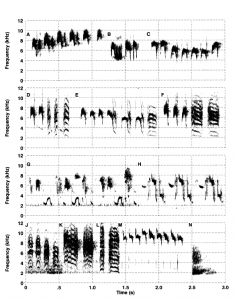 Figure 1. Various vocalizations (Dahlsten et al. 2002)
Figure 1. Various vocalizations (Dahlsten et al. 2002)
More audio available at www.xeno-canto.org.
Chestnut-backed Chickadees spend most of their time in and among trees, where they forage for insects and seeds. Their movements are quick, acrobatic, and graceful. They will frequently hop between different perches; preening, feather ruffling, and head scratching are other commonly observed movements. During the breeding season, pairs are seen chasing each other. However, it is not known if this is between members of the same sex, or the opposite sex (Dahlsten et al. 2002).
This chickadee does not migrate, but does travel often throughout its range during the winter. During this season, Chestnut-backed Chickadees join kinglets, nuthatches, and other chickadees to form mixed flocks. While some linear foraging movement has been observed, these flocks are generally unpredictable in their foraging patterns. It has been found that Chestnut-backed Chickadees are weakly territorial (Dixon 1954). In one study, it was found that the Chestnut-backed Chickadee had extended its range, and that the reason it did not upset the delicate ecological balance is likely that the chickadee had previously inhabited this area (Root 1964).
Chestnut-backed Chickadees prefer to nest in the cavities of trees, with nest building beginning late March to early April (Gaddis and Corkran 2008). The male appears to initiate nest selection by flying in front of the area and tapping it while the female watches. Subsequently, the female enters the nesting area and the male gathers vegetation so she may proceed to build the nest (Fowler 1998). The foundation of the nest is generally moss or bark, with the upper layer being animal fur. However, the Chestnut-backed Chickadee shows flexibility in nest-resource selection, though tends to choose nesting material with similar characteristics (Mahon et al. 2007). Clutch size for Chestnut-backed Chickadees ranges from 5 to 10 eggs, though 7 and 8 egg clutches are just as common, and the ideal clutch size is 9 eggs, as observed in nest box studies in 2008 (Gaddis and Corkran). Incubation in these studies averaged 14 days, and nestling growth averaged 19 days, and both females and males were observed feeding nestlings (Gaddis and Corkran 2008). After breeding, it has been noted that some Chestnut-backed Chickadees headed to higher elevations in British Columbia (Campbell et al. 1997).
All field notes taken by Megan Lewis.
Summary:
In general, I observed the chestnut-backed chickadees in the campus core area of Seminar I, Seminar II, the library, lecture halls, and Red Square. I noticed their tendency towards coniferous trees and a signature hang-beneath foraging movement.
Date: Nov 13 2014
Time: 11:15 – 11:30am
Location: TESC, Olympia WA
Seminar I, benches in front of Health Center
Lat: 47°04’22.99″N
Long: 122°58’45.29″W
Weather: partly overcast, 5-10 mph wind
Temp: ~ 40° F
Observations Summary:
I observed a mixed flock of Chestnut-backed Chickadees (CBCH), Golden-crowned Kinglets, Black-capped Chickadees and a Brown Creeper foraging in a grove of trees behind the SEM I building (by benches in front of Health Center). There were 4-5 CBCH in the flock. Individuals were exhibiting a variety of perching behaviors, visual searching, and gleaning from needles, cones, and moss-covered branches. I followed CBCH individuals for as long as I could clearly see their activity (usually 20-30 seconds, sometimes shorter) and recorded their movements with my voice recorder. The flock remained in this area for about 30 minutes, until moving on. During this time, their foraging activity caused seed pods to fall from the trees. I repeatedly saw individual CBCH glean something, perch on a branch, and hold it in their feet while eating it with their bill.
Time: 11:35-11:45am
Location: TESC, Olympia, WA
Douglas Fir next to Lecture Halls/Library walkway
Lat: 47°04’22.70″N
Long: 122°58’40.83″W
Observations Summary:
I relocated what I believe to be the same mixed flock of primarily Golden-crowned Kinglets, Chestnut-backed Chickadees (CBCH) and Black-capped Chickadees, this time in a Douglas fir tree on the right side of the bricked walkway between the Lecture Halls and Library (when facing CAB building). Here the birds were foraging higher in the canopy (10-18m), which made them harder to observe. I was tracking their movements closely through my binoculars. I attempted an initial scan of the flock in my field journal, however the birds were too quick moving to get an accurate review of different individuals. I continued taking notes with my voice recorder as I had done at the previous location. Individuals CBCH were gleaning from branches, needles, and especially the cones of the tree. Individual CBCH would perch on a cone and probe it with their bills. Like in the previous location, they caused a shower of seedpods from above. It is possible the CBCH were gleaning insects from the cones, or eating the seeds, or both. I only observed this cone gleaning in the chickadees. I was unable to conclude if it was just the Chestnut-backed Chickadee, or the Black-capped Chickadee as well.
Date: Nov 14 2014
Time: 3:30pm
Location: TESC, Olympia, WA
Trees on slope between Seminar I and Library
Lat: 47°04’23.23″N
Long: 122°58’43.79″W
Weather: clear, no clouds
Temp: 42° F
Observations Summary:
I observed a flock of Chestnut-backed Chickadees, along with some Black-capped Chickadees and a Red-breasted Nuthatch at the top (15m) of trees between SEM I and the Library. They appeared to be foraging, especially from the cones. The CBCH were perching on small outer branches mostly. I definitely noticed a tendency to forage in the outer canopy as opposed to inner. I heard soft “chit-chit” calls, sometimes followed by a longer “tsee-ee-ee” sound. I did a quick scan of the flock, noting perching, gleaning, and birds flying to other nearby trees.
Date: Nov 15 2014
Time: 2:13pm
Location: TESC, Olympia, WA
Seminar I bird feeder
Lat: 47°04’21.83″N
Long:122°58’44.92″W
Weather: clear, wind 6mph
Temp: 44° F
Observations Summary:
Observed a single Chestnut-backed Chickadee eating from a suet feeder on the side of the Seminar I building. There were also Black-capped Chickadees around, and possibly one other Chestnut-backed Chickadee. The individual fed at this feeder calmly upon my arrival. Then it flew up to the hardwood tree to the left of the feeder. I believe it rested there, then came back to the feeder, flew back and away to my left.
Location: Seminar I, benches in front of Health Center
Time: 2:22pm
Lat: 47°04’22.99″N
Long: 122°58’45.29″W
Observations Summary:
At this location I continued to watch what I believe were the same birds who had just left the bird feeder around the corner. There were at least 8 Chestnut-backed Chickadees in the area, accompanied by some Black-capped Chickadees. I saw seedpods falling from the coniferous trees that the birds were foraging in, as well as a cloud of insects around the branches. I observed the Chestnut-backed Chickadees perching and visual searching, then hang gleaning from cones and needles. I heard them making small “chit-chit” foraging noises, as well as some “chic-a-dee” alarms from the Black-capped Chickadees. I noted that the Chestnut-backed Chickadees were only foraging in coniferous trees in this area. I watched them fly up to the needles at the end of a branch, glean something from them, and fly away. I attempted to do a quick scan of what I saw throughout the entire flock. I observed perching, flying, flying, and perching before abandoning this attempt. It was too difficult to keep track of if I was actually watching different individuals or the same ones moving around. I noted that the Chestnut-backed Chickadees frequently hang upsidedown when gleaning. I observed an individual with a seedpod in its bill. It perched on a branch, put the seed in its feet, ate something from it, and dropped what was left. This individual defecated shortly after doing this.
Time: 3:17pm
Location: Douglas fir next to Lecture Halls/Library walkway
Lat: 47°04’22.70″N
Long: 122°58’40.83″W
Weather: 44°F, 2-5mph gusts
Observations Summary:
I suspect that these were the same birds I observed earlier in the day. Here they were gleaning from cones and I could see the seedpods falling down as a result of their foraging activity. This tree is heavily coned. The flock was foraging ~12m up and higher in the canopy. It was pretty hard to observed individual birds consistently. At 3:22pm I no longer heard their calls above me, but I did hear a Black-capped Chickadee “chic-a-dee” off to my right so I decided to check out the Seminar I bird feeder and surrounding area.
Time: 3:25pm
Location: Seminar I bird feeder
Lat: 47°04’21.83″N
Long:122°58’44.92″W
Weather: 43°F, 4mph wind
Observations Summary:
I saw an individual Chestnut-backed Chickadee on the bird feeder. There were also Black-capped Chickadees around. At 3:40pm, more Chestnut-backed Chickadees arrived. They would feed from the suet feeder then fly up to eat on a branch of the hardwood trees on either side of the feeder. I observed individuals feeding from the feeder, stopping to look around, then fly away. One individual had an altercation with a Dark-eyed Junco on the feeder. There were at least three Chestnut-backed Chickadees at the feeder, with Black-capped Chickadees, Juncos and Spotted Towhees around as well. I observed some Chestnut-backed Chickadees foraging from moss in hardwood trees above the feeder, but this was harder to reliably observe. I recorded a single individual’s movements over a few seconds as: perch, feed, visual search, perch/feed, visual search, fly away. I heard some Chestnut-backed Chickadees make buzzy “zwit-zwit” sounds as they would flit from feeder to feeder. At around 3:51pm, the flock seemed to have moved on. I briefly relocated the flock in trees near the Longhouse, but they appeared to be just perching here and visual searching. They were more dispersed in this area. At 3:54pm I moved back to the Seminar I feeder where I observed the CBCH again. I watched an individual here land above the feeder (on the post), make a buzzy “zhwee” sound, then visual search, peck at suet feeder, move to tall seed feeder, eat, visual search, and depart. I observed the birds in this area until about 4:05pm. They were mostly in the hardwood trees at that point (about 5 or 6m up), and it was difficult to observe them.
Date: Nov 19 2014
Time: 11:15-11:25am
Location: TESC, Olympia, WA
In grove of trees behind library, to right of path that leads to road
Lat: 47° 04’28.96”N
Long: 122° 58’36.99”W
Weather: 44°F, mostly cloudy, 1mph wind
Observations Summary:
Here I observed a flock of at least one Chestnut-backed Chickadee, Black-capped Chickadees and what I believe was a Red-breasted Nuthatch. The flock was foraging between three trees in the grove, and I observed the Chestnut-backed Chickadee gleaning from tree cones. The flock remained here for about 10 minutes, during which I heard some soft “chik-a-dee” calls. They were foraging 16-18m up in the outer canopy. After 10 minutes they left the area, heading towards the forest. I was unable to track them.
Time: 11:27am
Location: Seminar I bird feeder
Lat: 47°04’21.83″N
Long:122°58’44.92″W
Observations Summary:
At the Seminar I feeder I observed Chestnut-backed Chickadees and Black-capped Chickadees feeding. A single Chestnut-backed Chickadee landed on the feeder with a Black-capped Chickadee, then both left after an alarm “chik-a-dee” from the Black-capped. Next there was a Chestnut-backed Chickadee on the tube feeder. Then a Chestnut-backed was on the suet feeder, pecking, looking around and pecking again. I observed more Chestnut-backed Chickadees in the London planetrees on either side of the feeders. I counted at least 7 individuals in total. I also observed a Chestnut-backed glean from the trunk of a London planetree as it was perched on the side of the trunk. The entire flock was making quiet, squeaky noises. They fed at the feeders for about 5 minutes.
Time: 11:35am
Location: Trees by Health Center
Lat: 47°04’22.99″N
Long: 122°58’45.29″W
Temp: 46° F
Observations Summary:
At this location I counted at least 10 individual Chestnut-backed Chickadees. They were foraging in the lower canopy (3-6m). I observed an individual move from the far end of a branch, inward towards the trunk, gleaning from moss on the branch as it went (about 2m from ground). The flock foraged here for about 5 minutes before moving on. I saw them resting for a moment in trees in front of the Longhouse.
Time: 11:42am
Location: Trees by Longhouse
Lat: 47°04’21.18”N
Long: 122°58’45.92”W
Observations Summary:
Here the flock (including Chestnut-backed Chickadees) was foraging 7m and up in both inner and outer canopy. I observed an individual hang on moss covered needles and glean from the moss on the outer, lower branches, ~2m. At this location the flock appeared to be spread out across the Longhouse Ethnobotanical Garden and surround trees. There were also Dark-eyed Juncos, Spotted Towhees and a Song Sparrow nearby. My observations show that Chestnut-backed Chickadees frequently hang from branches, needles, or cones with their backs to the ground, heads pointing up. Here they were foraging as low as 3m in some trees. I observed lots of visual searching, as well as gleaning from moss and from cones. Sometimes the Chestnut-backed Chickadees would perch sideways on the trunk of a tree, sometimes gleaning from moss there. I noticed that they were also foraging from smaller, non-coniferous trees. I observed 10-15 individuals at this location.
Time: 12:01pm
Location: Seminar I feeder
Lat: 47°04’21.83″N
Long: 122°58’44.92″W
Observations Summary:
Here the Chestnut-backed Chickadees were once again in the London planetrees surrounding the feeder. There were 10-15 individuals, including some Black-capped Chickadees. I observed some Chestnut-backed Chickadees moving up the trunk of one London planetree, gleaning from it. I wondered if they were gleaning insects from the bark. The Chestnut-backed Chickadees were also feeding at thefour feeders and from a nearby dead leaf/moss-covered tree. They foraged almost exclusively in the hanging moss on this tree. At this point I had been following the flock from location to location steadily for about 30 minutes. I watched one Chestnut-backed Chickadee land on the feeder, then another joined it and one chased the other. I noticed that they make a kind of warbly noise when they have pair interactions/altercations. I also noticed that there was usually only one Chestnut-backed Chickadee on the suet feeder at once, though sometimes a Junco would be sitting on top. They would often perch on top of the feeder poles and look around (sentinel style) before moving to one of the feeders. They fed mostly from the stand feeders, with the occasional individual at one of the window suet feeders. I observed individuals flying down from the trees, landing on top of the feeder pole and waiting for other individuals to leave the feeder before moving down to it.
12:09pm: 48°F, sun came out, could see blue sky partly cloudy, no wind
I observed a short absence of the Chestnut-backed Chickadees (1-2 minutes) from the feeder. Then they returned from the opposite side of the path. There were Dark-eyed Juncos below the feeder, foraging on the ground. I observed an individual Chestnut-backed Chickadee perch on a low London planetree branch, then dive and land in the small tree to the right of the feeder (looks like a Christmastree). When not at the feeder, individuals are foraging with the flock in the dead leaf/moss of London planetrees to my right, on the opposite side of the path as the feeder. Three or four individuals at a time will move to the feeder for 20-30 seconds each. I heard the sound “tsee-ee” ending on a high note, and familiar “chit-chit” sounds and alarm calls.
12:15pm: Car went by
12:17pm: I think they have moved farther to my left
12:19pm: Going to search
12:20pm: Relocated Chestnut-backed Chickadees in Douglas fir between Lecture Halls and Library
Lat: 47°04’22.70″N
Long: 122°58’40.83″W
Here they were foraging low, around 4-5m, but sometimes higher (6-8m) in the outer canopy. I observed individuals gleaning from cones and inner needles/moss by branches. There were also Black-capped Chickadees in the flock. I noticed some individuals moving between the Douglas fir and hardwood trees to the left (across brick path). I followed 9 individuals for 5-10 seconds each. (1) Perch/glean from cone, perch/glean from needles, perch/glean from cone. (2) Perch on needles, fly to hardwood tree. (3) Perch, glean from cone. (4) Perch, glean from cone, pecking, making calls. (5) Glean from cone, fly away, perch. (6) Several individuals ly to hardwood trees. (7) Perch on needles. (8) Perch, perch, perch. (9) Perch, glean from cone, glean from cone, perch, visual search. During this time I heard loud “chit-chit” calls from the flock (amplified at one point), as well as buzzy sounds. Some individuals moved to the mossy tree to my left (left of stairs). Here they were gleaning from moss on the branches and trunk.
12:31pm:I noticed some Chestnut-backed Chickadees were also in the cone trees closer to Seminar I on the Lecture Halls side of the path. They appeared to be moving back towards the Seminar I feeder.
12:33pm: Back at the Seminar I feeder. Three individual Chestnut-backed were on the feeder. Individuals feeding at the feeder then flying up to the trees, then dropping back down from branches (repeating this).
Time: 1:34pm
Location: Seminar I feeder
Lat: 47°04’21.83″N
Long:122°58’44.92″W
Weather: 50°F, calm
Observations Summary:
Took a short break then returned to field. Observing Chestnut-backed Chickadees in London planetrees across path from feeder (4m up). I observed gleaning from moss on bark of trees, and in dead leaf/moss/needles of a tree behind the London planetrees. I observed the Chestnut-backed Chickadees hopping around on the inner branches of this tree (2-6m up). They appeared to be foraging but it was difficult to see individuals for very long. I observed two individuals: (1) perch, perch (visual searching), (2) perching and frantic visual searching while turning body. 5 or 6 Chestnut-backed Chickadee were then on the feeder to my right and in the small tree to he right of the feeder. Dark-eyed Juncos were around and on the feeders as well. The Chestnut-backed Chickadees were moving throughout the area (feeders, trees above, tree to right). I observed one individual go from the suet feeder to a branch of the small tree with something in its bill then eating it. I then observed several others doing the same thing. I tracked another individual: perch, perch, hover, fly away (from feeder). I observed flock movement between mixed habitat trees at this location. I observed for about 15 minutes there, then the flock disappeared.
1:57pm: Partly cloudy, some sun
I relocated the Chestnut-backed Chickadees in the Douglas fir between the Library and the Lecture Halls. Here I saw many seed pods falling from the tree as thechickadees were foraging in it. They were foraging in the high canopy (12-14m), hanging on cones and perching on branches. I heard soft squeaky noises coming from the chickadees. Some were flying back in the direction of the feeder (behind me). Some moved to the mossy/dead leaf tree to my right, at about 10m, less than 1m from canopy.
2:03pm: Back at Seminar I feeder
Here the Chestnut-backed Chickadees were feeding at the tube feeder and the suet feeder on the right window. A Song Sparrow was also in the feeder area. As usual, Chestnut-backed Chickadees on London planetree above and feeding from feeder. When the Song Sparrow vacated the feeder, more Chestnut-backed Chickadees moved in immediately. Iobserved an individual perch on a branch above, visual search, then dive down to the feeder. Chickadees on the tube feeder will sometimes throw seeds out of feeder. Black-capped Chickadees were also feeding here. Sometimes one Chestnut-backed Chickadee would be at the feeder and another would swoop down and the first would fly off with a loud “ch-ch”. Other individuals will sometimes make this buzzy “ch-ch” noise when leaving the feeder. One individual flew past the feeder, landed on the small tree to the right, flew to the suet feeder on the post, fed for 10-15 seconds, flew back to the small tree, then left. Another individual took a seed from the tube feeder, held it in its feet and was eating it at the feeder when a junco came and the chickadee flew away. The Chestnut-backed will often hang-upsidedown on the suet feeder to feed. They will also perch on top of the pole sentinel style.
2:14pm: Moved to behind Seminar I, still partly cloudy but more blue sky
Saw some Kinglets and a Brown Creeper. Chestnut-backed Chickadees in a big tree to the left of the Swiss Mountain Pine (European), foraging at 6-10m, 4m from canopy. There was a Junco alarming loudly on the Swiss Mountain Pine. I watched Chestnut-backed Chickadees moving between two trees (next to Health Center, with 2 benches in between). These trees had less cones than some I have seen them forage in. I saw mostly gleaning from branches and perching, with the occasional falling seed pod. I saw a Chestnut-backed Chickadee in the Swiss Mountain Pine, moving throughout the branches and calling, then it disappeared. I also heard Chestnut-backed Chickadees calling in younger trees (maybe Douglas fir) to the right of the Swiss Mountain Pine. Then there was an individual in the coned tree above the platform, making “chit-chit” or “zwhit-zwhit” calls. It seemed to be perching mainly, and soon went quiet. I also saw a swarm of insects around this tree in a patch of sunlight. At this point I had been observing for about an hour since the beginning of this field session.I observed them in this area until 2:44pm. At one point I observed a Chestnut-backed Chickadee try to perch on the side of the concrete Health Center building, on ridge above 3rd floor windows. It perched a little, hovered, then tried again, then flew away. The flock moved to the three coniferous trees by the steps leading down from the Health Center. I heard lots of junco and chickadees alarming while some people went by and a plane flew overhead. Things quieted down after a bit and I moved on.
2:47pm: Back at Seminar I feeder, 49°F, 2mph wind, partly cloudy
Here there were some Chestnut-backed and Black-capped Chickadees at the feeders. Chestnut-backed Chickadees were feeding here for a few minutes on window suet and pole feeders. I waited, hoping more would show up.
2:55pm: Longhouse Ethnobotanical Garden
Chestnut-backed Chickadees foraging in dead leaf/moss covered tree above welcome plaque (2-4m), and more in small hardwood trees to right of Longhouse doors (2m). There were also individuals in dead leaf trees, hanging and foraging from leaves near the tips of branches (4-6m). There were Black-capped Chickadees and Ruby-crowned Kinglets around as well. At 3:03pm they were still foraging in these trees.
Date: Dec 2 2014
Time: 2:05pm
Location:TESC, Olympia, WA, Douglas fir by Lecture Halls and Library
Lat: 47°04’22.70″N
Long: 122°58’40.83″W
Weather: Clear, no clouds, wind 6mph, 42°F
Observations Summary:
I was walking past and heard Chestnut-backed Chickadees in top canopy of the Douglas fir tree. I sat down to observe them but as soon as I pulled out my notebook they had left. I noticed them again in a nearby tree in Red Square.
Time: 2:13pm
Location: Large hardwood/knobby trees (leafless, unidentified) outside CAB building, to right of door when facing building.
Lat: 47°04’22.77”N
Long: 122°58’36.16”W
Observations Summary:
There were Chestnut-backed Chickadees and Black-capped Chickadees in these trees, ~8m up in the tops of the trees. They appeared to be foraging on the trunk and larger limbs of the tree, gleaning items from the bark. The Black-capped Chickadees were scolding with their “chik-a-dee” call very loudly. The Chestnut-backed were making squeaky noises, sometimes similar to the “chik-a-dee” call. I saw one Chestnut-backed perched on a tall vertical branch, sentinel style, making occasional squeaky calls that ended on a high note.They were also making the Chestnut-backed version of the “chicka-dee” call. Another individual Chestnut-backed was over near the Seminar II bird feeder, on the small trees behind the wall opposite the feeder, next to the bench. It was perching in these trees, accompanied by two or three Black-capped Chickadees, and left soon after.
Time: 2:41pm
Location: Bushes/trees behind Douglas fir near Lecture Halls and Library.
Lat: 47°04’22.90”N
Long: 122°58’40.26”W
Weather: 41°F, 4mph wind
Observations:
There was at least one Chestnut-backed Chickadee making squeaky “chicka-dee” calls in cluster of bushes and small trees (one was a madrone) with a Junco, and maybe one other Chestnut-backed. I could hear the Black-capped Chickadees making their “chicka-dee” calls off in the distance. I couldn’t see the specific bush the chickadee was in to identify it. It was perching and possibly gleaning. At 2:44pm this chickadee flew out of the bush, over my head and towards the Douglas fir/Seminar I feeder. I lost sight of it at this point. I started hearing another Chestnut-backed in the same bush, making the same calls as the previous bird. At 2:46pm this bird went quiet. At 2:47pm I moved on.
Time: 2:49pm
Location: Seminar I feeder
Lat: 47°04’21.83″N
Long:122°58’44.92″W
Observations Summary: There were three Chestnut-backed Chickadees on the suet feeder on the window to the right of the stand feeders. I counted five individuals upon arrival, but there were more in surrounding trees. One perched on the concrete wall of Seminar I for a minute. When I arrived, the birds that were feeding were making musical sounding calls that were almost trill-like ended on higher notes. At this point I estimated that there were at least 10 individuals in the area. One individual perched on top of the suction cup that holds the suet feeder on the window. The Chestnut-backed Chickadees were flying up into the London planetrees around the feeder (these are dead leaf now) and appear to be foraging here as well. A Downy Woodpecker appeared on the London planetree and flew onto the same window suet feeder and fed there for a minute. After this, there were less Chestnut-backed around the feeder. However they were still in the dead leaf/moss covered London planetree to my right, ~8m up, and at 20m in the top canopy of a moss-covered tree, which I believe is a Western Hemlock. They were hanging beneath the ends of branches, on needles and moss, and foraging. They foraged here for a few minutes, then left. At 3:15 they came back in the Hemlock and dead leaf London planetree. They were foraging and moving between trees around 4-6m, 8m from the canopy, on inner and outer branches.
Date: Dec 3 2014
Time: 1:15pm
Location: Douglas fir by Lecture Halls/Library
Lat: 47°04’22.70″N
Long: 122°58’40.83″W
Weather: 42°F, overcast with some blue sky patches, 0% precipitation, calm (no wind)
Observations Summary:
I observed about 5 individuals (Chestnut-backed Chickadees, including a couple Black-capped Chickadees) foraging in the top canopy (~18m) of the Douglas fir between the Lecture Halls and Library. I noted that they were foraging more on the inner branches near the trunk, as opposedto the outer branches where I normally see them. I saw seedpods falling from the tree. A single individual flew to the knobby hardwood trees across the brick walkway. Immediately after this, 4 chickadees flew out of the Doug fir, over my head and into the mossy leafless tree behind me (to left of steps when sitting). They kept moving that direction, towards Seminar I and Lab II. At this point I could hear them in the distance but I wasn’t sure where they were, it sounded as if there were still some in the Douglas fir and trees to my right, but I was not seeing them. I walked over towards the Seminar I feeder and saw some chickadees fly from a tall coniferous tree to the London planetrees across from the feeder.
At the Seminar I feeder, 1:23pm: Initially I counted at least 10 individual Chestnut-backed Chickadees, but soon realized that two of them were Red-breasted Nuthatches. There was at least one Black-capped Chickadee in the mix as well. The Chestnut-backed Chickadees were feeding from the suet feeder on the right window (the Nuthatches were doing so as well, though they did not feed together at the suet feeder). The Chestnut-backed were also foraging in the low branches of the mossy London planetree to my right, ~3m. They were also foraging in a small mossy tree behind me, the tree was ~3m tall. The Chestnut-backed Chickadees were also foraging 12-14m in the Western Hemlock, >1m from the canopy. Here they were hanging beneath the needles at the tips of the outer branches. An individual Chestnut-backed made a “chi-chi” sound when it flew to the window suet feeder. At 1:32pm, things got quiet.
Time: 1:35pm
Location: Circle concrete benches/walls and coniferous trees near Longhouse.
Lat: 47°04’21.25”N
Long: 122°58’46.02”W
Observations Summary:
Here the Chestnut-backed Chickadees were foraging in coniferous trees in the grove with the small birdhouse on one tree. They were also across the path at Seminar I in a Douglas fir, ~6m in lowest hanging branches. They were pretty quiet here, not alarming, just making soft squeaky “chit” noises. I also observed them in smaller trees in the Longhouse front garden behind me, in a small mossy tree by the Seminar I conifers, and two short thin trees by the staircase. The flock seemed to be moving more towards the Longhouse or maybe behind Seminar I by the Health Center. I saw Black-capped Chickadees and Red-breasted Nuthatches as well. At 1:42pm, I decided to move on and see where they had gone.
1:47pm: Relocated the group of 10+ behind Seminar I, by Health center, in a small tree with a mossy trunk thatis near the doors to the Health Center and the tall mossy conifer next to it. They were foraging pretty low, ~4m from the ground in the low branches, ~6m from the canopy. The chickadees were moving throughout these smaller mossy trees, much closer to the ground than I normally see them. I am wondering if they like the warmer weather better and forage up higher, closer to the sun, when it is colder (which it has been).The Chestnut-backed Chickadees were very quiet today, only making the occasional squeaky vocalization while foraging. They did their signature hang-beneath on tree needles and foraging in the moss from the branches and trunks of the smaller trees. They foraged in both the hanging light green moss and the bright green moss that grows on the trunks of some trees.
1:57pm: I moved up to the second floor of Seminar I, out on the stairway balcony overlooking the same courtyard in front of the Health Center. This got me up close in thetrees that the chickadees were foraging in. I recorded some vocals here.It was a flock of ~10, mostly Chestnut-backed Chickadees with 1 or 2 Black-capped Chickadees and a Red-breasted Nuthatch. An individual Chestnut-backed Chickadee gleaned something sizeable from a small, ivy covered tree below the big conifer, took it to a branch of the conifer and ate the item while holding it in its feet against the branch. It soon got quiet and it was difficult to tell if the chickadees were still around. I did not see or here them again at this location, but I did hear a Raven.
Time: 2:09pm
Temp: 43° F
Location: Seminar II bird feeder
Lat: 47°04’21.69”N
Long: 122°58’34.80”W
Observations Summary:
At least two Chestnut-backed Chickadees have been feeding here for the past hour, taking seeds from the feeder and perching in the Snowberry bushes surrounding the feeder. When I arrived there were at least two, plus at least 3 Black-capped Chickadees who were making alarm calls. I observed them getting seeds from feeder and taking them to the surrounding trees (mixed, some Paper birches).The two Chestnut-backed Chickadees were feeding at the feeder and hanging out in the bushes for a few minutes at a time, then they would disappear, usually for about 10 minutes, and return and repeat. At 2:16pm, a single Chestnut-backed Chickadee was in a Snowberry bush, eating something (presumably a seed from feeder) held in its feet. It then went to the feeder, got a seed, flew to the Paper birch and ate the seed while holding it in its feet. The individual perched, finished eating, pooped, then flew back to the feeder, got a seed and flew to the Snowberry bushes by the benches to my left, perched in there for a moment then flew away towards the CAB building, possibly into some evergreentrees.
At 2:18pm, an individual Chestnut-backed Chickadee returned to the Paper Birch by the feeder, making squeaky calls and eating lots of seed from the feeder. It then flew to the top of a Paper birch to the right of the feeder and flew away.
2:26pm: Helicopter flies over low, very loud.
2:28pm: Black-capped Chickadees at feeder, but hadn’t seen Chestnut-backed in 10 minutes.
2:29pm: Individual Chestnut-backed Chickadee returns, then another (2 total). They were both taking seeds from the feeder. One individual hung-beneath a branch next to the feeder, then hopped down onto the feeder. The other individual was sitting in the Snowberry bush, eating what I was presume was a seed in its feet. It was pecking vigorously at the item. At 2:31pm there were three individuals, perching in Paper birch trees around feeder. Sometimes an individual would fly down the hill to a little tree with little dead orange leaves.
2:33pm: No sign of Chestnut-backed Chickadees
2:37pm: Still no sign of them, Raven in a tree vocalizing.
2:40pm: One Black-capped Chickadee returns to the feeder
2:41pm: One Chestnut-backed in the Snowberry bush to my left by the bench. It perched there, making squeaky vocalizations, then moved to another perch, hammering at its feet and eating something. It did this for ~1 minute, then moved farther into the bush. I saw it possibly glean something from the moss on a large rock. I lost track of this individual as it went farther into the bushes.
At 2:44pm there was one Chestnut-backed Chickadee at the feeder, eating a seed in its feet. Several Black-capped Chickadees were around as well. There was a Chestnut-backed in the Snowberry bushes by the feeder, eating a seed.It flew to the Paper birch, then to the feeder, got a seed, flew back to the same branch of the birch to eat the seed, then went back to the feeder to get a seed and flew to a different branch to eat it. At this point I was observing only one individual in the area. It perched in the Snowberry bush, eating a seed in its feet, then flew to the Paper birch, to the feeder and back to eat. Last I saw until 2:53pm.
2:53pm: A single Chestnut-backed Chickadee returns, gets a seed from the feeder and eats it in the Paper birch.
2:56pm: Individual in Snowberry bush by bench, flies to Paper birch, gets a seed from feeder, flies back, then to Snowberry.
2:57pm: There were two individuals in the area, on in the Paper birch, one hanging out in the Snowberry bush, eating a seed.
3:01pm: Still there, in low Snowberry bush.
3:03pm: in Paper birch, goes to feeder, eats seed in Paper birch. Continues this pattern.
3:04pm: Chestnut-backed Chickadee flies away from the feeder, down thehill towards Seminar II.
3:10pm: No sign of Chestnut-backed Chickadees.
3:12pm: 1 Black-capped Chickadee returns, then a Chestnut-backed returns. It takes a seed from the feeder and flies to the Paper birch. After it finishes with the seed, it flips its body around on the branch and the seed flies away. The individual gets another seed, eats in Paper birch. Then it flies up to another Paper birch branch, does a visual search, flies back to the feeder, gets a seed and goes back to the tree.
3:15pm: There was one Chestnut-backed Chickadee up in the small (maybe birch) tree to my right. It was perched there, making some interesting vocals which I recorded. It did this for ~2 minutes.
Chestnut-backed Chickadees are not considered to be a threatened species. The suppression of natural forest fires in recent decades has allowed their numbers to climb, and their habitat has expanded. Using the North American Breeding Bird Survey (BBS) and Christmas Bird Count (CBC), we can notice trends in this birds’ population from 1966 to 2012. The BBS data has shown that the entire species population is relatively stable, though Washington state has seen a small increase (<20%). The CBC data shows a noticeable and steady increase in the number of birds seen per party hour in the United States, with Washington state showing a large increase over this time period (>100%). Overall, this species has a large and healthy population.
With the recent removal of the Elwha River dam, studies have been conducted in an attempt to forecast avian responses to river restoration efforts (Gelarden and McLaughlin 2013). These forecasts predict that songbirds associated with deciduous trees, and those who are habitat generalists (such as the Chestnut-backed Chickadee) will rapidly re-populate restored local habitats. Songbirds that are conifer specialists, however, will take longer to re-populate restored areas due to slow growth of coniferous trees and specialized habitat needs of these birds. If habitat generalists such as the Chestnut-backed Chickadee do not “consistently occupy restored habitats within 10-20 years,” then concern should be raised about the effectiveness of the restoration efforts (Gelarden and McLaughlin 2013). In an attempt to engage birds in vegetation restoration after the Elwha damn removal, studies were conducted to see how effectively native plant seeds will be dispersed by birds during the habitat restoration. It was discovered that birds disperse 59% of native woody plant seeds, and while the American Robin is the main seed disperser, other avian species play a role in seed dispersal as well (McLaughlin 2013).
In a study conducted in 2006 in British Columbia managed forests, it was suggested that nest predation of Chestnut-backed Chickadees was influenced by low mast or high mast years. It was hypothesized that a low mast year in 1999 and 2000 caused red squirrels to go from relying on seed caches to preying heavily on Chestnut-backed Chickadee nestlings the following years. The study concluded that forest managers should conduct multiyear studies in order to monitor the responses of predator and prey to changing habitat structure (Mahon and Martin 2006).
In one study, Chestnut-backed Chickadees (and three other species) responded positively to commercial thinning on managed western hemlock forests (Artman 2003). Although there were concerns about the responses of cavity nesting birds to a reduction in snags, population levels seemed to rely on other environmental factors. This suggests that commercial thinning could be an appropriate way to enhance habitat conditions in managed forests for some birds (Artman 2003).
In a study conducted to whether the presence of salmon increased the density of passerine populations in the Pacific Northwest, the Chestnut-backed Chickadee was the only songbird that did not have a significant response to the presence of salmon in rivers. It is thought that salmon-derived nutrients benefit songbird populations in these areas, however, in the case of the Chestnut-backed Chickadee, this “may not be biologically meaningful” (Christie and Reimchen 2008).
Photos taken by Melisa Pinnow at The Evergreen State College, Fall 2014
Anthony, R., G. Green, E. Forsman, and K. Nelson. 1996. Avian Abundance in Riparian Zones of Three Forest Types in the Cascade Mountains, Oregon. The Wilson Bulletin 108:280-290.
Artman, V. 2003. Effects of Commercial Thinning on Breeding Bird Populations in Western Hemlock Forests. The American Midland Naturalist 149:225-232.
Avey, M., L. Bloomfield, J. Elie, T. Freeberg, L. Guillette, M. Hoeschele, H. Lee, M. Moscicki, J. Owens, and C. Sturdy. 2014. ZENK Activation in the Nidopallium of Black-Capped Chickadees in Response to Both Conspecific and Heterospecific Calls. PLoS ONE 9:e100927.
Beal, F. E. L. (1907). Birds of California in relation to the fruit industry, pt. 1. Biol. Surv. Bull. 30.
Bent, A. C (1946). Life histories of North American jays, crows, and titmice. U.S. Natl. Mus. Bull. 191.
Burg, T., A. Gaston, K. Winker, and V. Friesen. 2006. Effects of Pleistocene glaciations on population structure of North American chestnut-backed chickadees. Molecular Ecology 15:2409-2419.
Campbell, R. W., N. K. Dawe, I. McTaggart-Cowan, J. M. Cooper, and G. W. Kaiser (1997). The birds of British Columbia, Vol. 3-passerines: flycatchers through vireos. R. Br. Columbia Mus. Victoria.
Christie, K., and T. Reimchen. 2008. Presence of Salmon Increases Passerine Density on Pacific Northwest Streams. The Auk 125:51-59.
Dahlsten, Donald L., Leonard A. Brennan, D. Archibald Mccallum and Sandra L. Gaunt (2002). Chestnut-backed Chickadee (Poecile rufescens), The Birds of North America Online (A. Poole, Ed.). Ithaca: Cornell Lab of Ornithology; Retrieved from the Birds of North America Online: http://bna.birds.cornell.edu/bna/species/689. doi:10.2173/bna.689
Dixon, K. L (1954). Some ecological relations of chickadees and titmice in central California. Condor 56:113-124.
Fowler, Jr., K. M (1998). Breeding biology of the Chestnut-backed Chickadee. Typed manuscript of a paper presented at the North American Ornithological Conference. 11 April 1998, St. Louis, MO.
Gaddis, P., and C. Corkran. 2008. Reproductive Biology of the Chestnut-backed Chickadee (Poecile rufescens) in Northwestern Oregon. Northwestern Naturalist 89:152-163.
Gelarden, C., and J. McLaughlin. 2013. Forecasting Avian Responses to Elwha River Restoration. Ecological Restoration 31:31-45.
Gilligan, J., M. Smith, D. Rogers, and A. Contreras (1994). Birds of Oregon: status and distribution. Cinclus Publ. McMinnville, OR.
Gold, C., and D. Dahlsten. 1983. Effects of Parasitic Flies (Protocalliphora spp.) on Nestlings of Mountain and Chestnut-backed Chickadees. The Wilson Bulletin 95:560-572.
Grinnell, J (1904). The origin and distribution of the Chestnut-backed Chickadee. Auk 21:364-378.
Hoeschele, M., D. Gammon, M. Moscicki, and C. Sturdy. 2009. Note types and coding in Parid vocalizations: The chick-a-dee call of the chestnut-backed chickadee (Poecile rufuscens). J. Acoust. Soc. Am. 126:2088.
Kleintjes, P., and D. Dahlsten. 1992. A Comparison of Three Techniques for Analyzing the Arthropod Diet of Plain Titmouse and Chestnut-Backed Chickadee Nestlings. Journal of Field Ornithology 63.
Kleintjes, P. K. and D. L. Dahlsten (1994). Foraging behavior and nestling diet of Chestnut-backed Chickadees in Monterey Pine. Condor 96:647-653.
Mahon, C., and K. Martin. 2006. Nest Survival of Chickadees in Managed Forests: Habitat, Predator, and Year Effects. Journal of Wildlife Management 70:1257-1265.
Mahon, Lisa C, Kathy Martin, J.D Steventon (2007). Habitat attributes and chestnut-backed chickadee nest site selection in uncut and partial-cut forests. Canadian Journal of Forest Research. 37(7): 1272-1285, 10.1139/X06-324. 1272-128.
McLaughlin, J. 2013. Engaging Birds in Vegetation Restoration after Elwha Dam Removal. Ecological Restoration 31:46-56.
Sibley, D. 2003. The Sibley field guide to birds of western North America. Knopf, New York.
Smith, Susan M (1967). An Ecological Study of Winter Flocks of Black-Capped and Chestnut-Backed Chickadees. Wilson Ornithological Society. Vol. 79, No. 2. pp. 200-207
Sturman, W. A (1968a). Description and analysis of breeding habitats of the chickadeesParus atricapillus and P. rufescens. Ecology 49:418-431.
Sturman, W. A (1968b). The foraging ecology of Parus atricapillus and P. rufescens in the breeding season, with comparisons with other species of Parus. Condor 70:309-322.
Root, R. 1964. Ecological Interactions of the Chestnut-Backed Chickadee Following a Range Extension. The Condor 66:229-238.
Zarnowitz, J., and D. Manuwal. 1985. The Effects of Forest Management on Cavity-Nesting Birds in Northwestern Washington. The Journal of Wildlife Management 49:255.

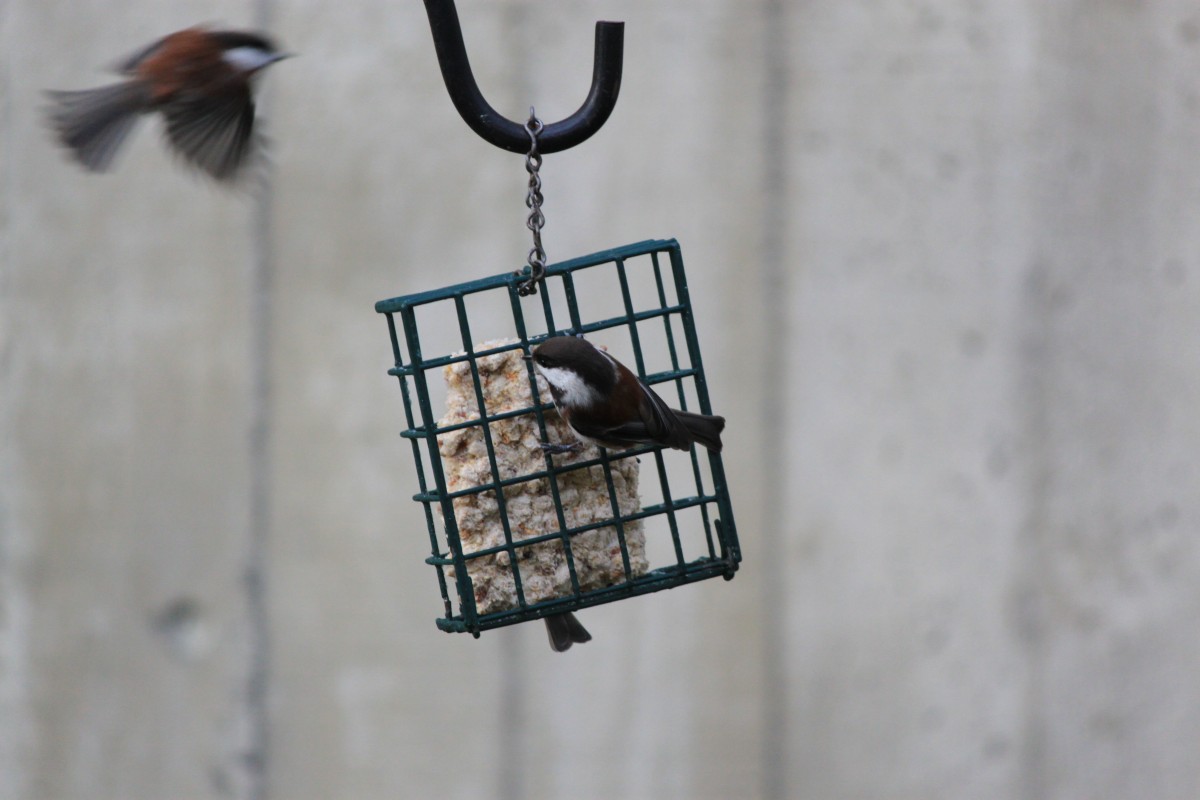
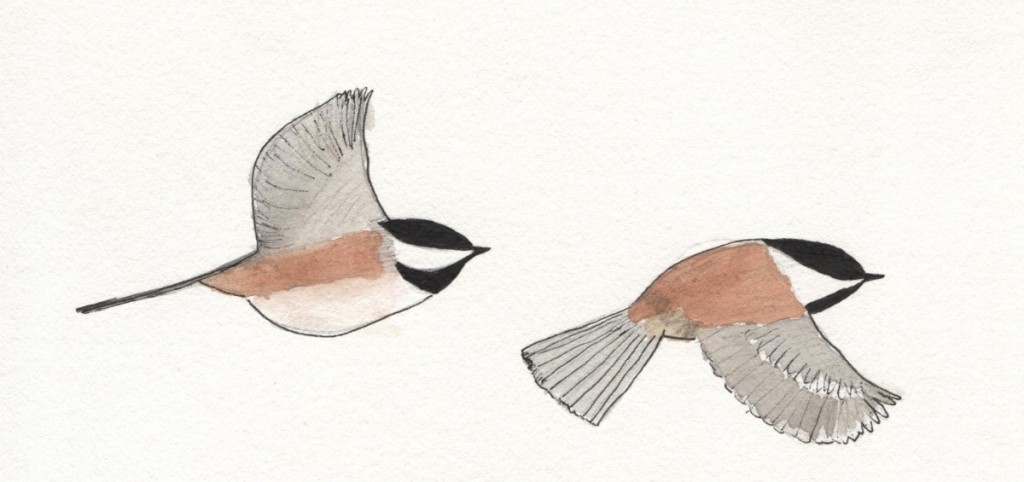
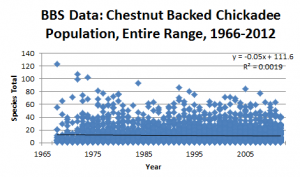
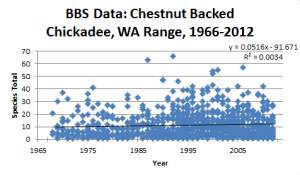
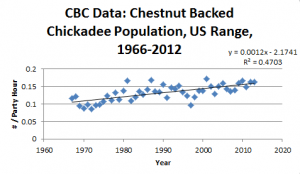
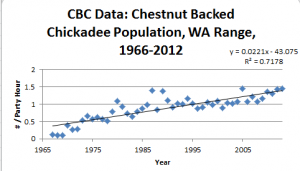
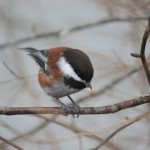
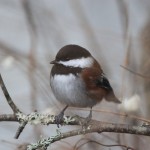
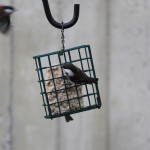
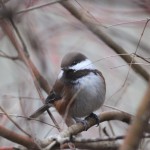
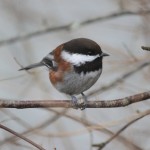
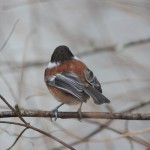
Leave a Reply